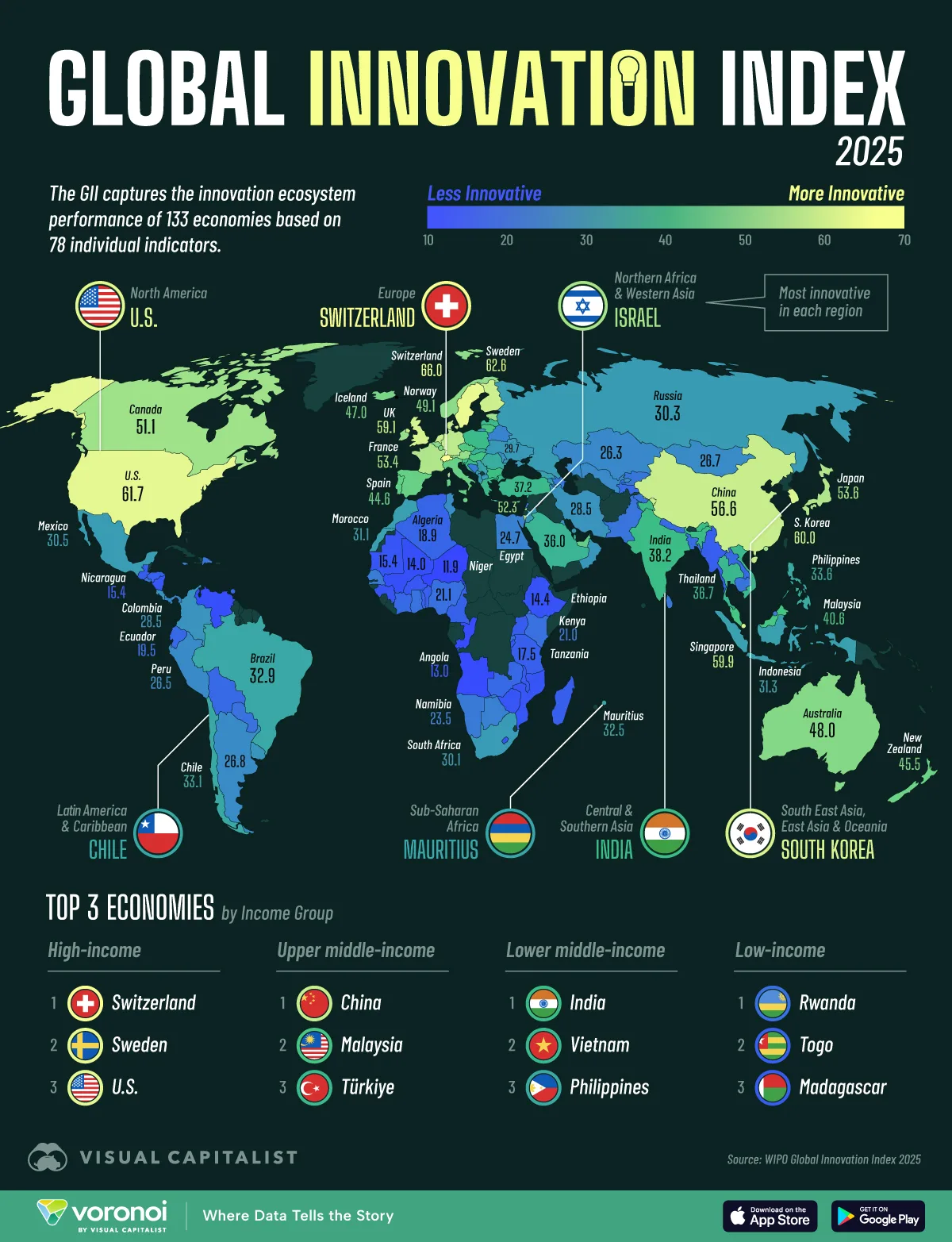Imagine a country where clean roads meet quiet innovation labs, where young people learn coding in rural towns, and where startups quietly disrupt old industries. That country is Rwanda, and in Global Innovation Index 2025 rankings, Rwanda is being celebrated as one of the overperformers among low-income economies.
Being a low-income country often means fewer resources, less funding for research and technology, and many infrastructure challenges. So when Rwanda is ranked 104th overall in the GII (out of over 130 economies) yet still placed among the top innovators in the low-income category, it’s a signal: strategy, policy, and determination matter just as much as money.

What the Ranking Means
The Global Innovation Index (GII) does not just look at patents or big tech firms. It measures innovation across seven pillars like:
- Institutions (e.g. government policies, regulatory frameworks)
- Human capital & research (e.g. education systems, how many trained scientists)
- Infrastructure (internet access, power, etc.)
- Business sophistication (how business friendly the environment is)
- Market sophistication and creative outputs among others.
Rwanda may not top every pillar, but it has impressed in a few key ones, especially Institutions, showing strong governance. It is also recognised for doing more with less, which is why it’s labelled an “innovation overperformer” in its income group.
How Rwanda Did It — Key Moves
Here are some of the practical steps Rwanda took that helped it punch above its weight:
- Strong Policy and Institutions
Rwanda has made it easy to do business. For instance, the Rwanda Development Board (RDB) lets people register a company online in just 6 hours — one of the fastest systems in Africa. This efficiency helps entrepreneurs start businesses without being stuck in bureaucracy. -
Focus on Education and Skills
The government partnered with Carnegie Mellon University Africa (CMU-Africa) in Kigali, which trains African students in cutting-edge fields like AI, robotics, and data science. Many graduates go on to create startups or work in regional tech hubs. -
Adoption of Technology and Digital Infrastructure
Rwanda was one of the first countries to use drones for medical deliveries. Through a partnership with Zipline, vaccines, blood, and medicines are now flown by drone to remote areas; a simple, yet world-leading innovation in healthcare delivery. -
Support for Startup Ecosystems and Research
The country hosts the Hanga Pitchfest, an annual national innovation competition supported by RDB and partners, where young innovators showcase their ideas and win funding. Startups like PikiWash (a bike-washing service run by youth) and Bag Innovation (digital learning platform) have gained visibility through such platforms. -
Doing More with Less
In agriculture, Rwanda is using simple mobile platforms like Smart Nkunganire System (SNS) to digitize the distribution of farm inputs like fertilizers. Farmers can register and receive subsidies digitally, making the system cheaper, faster, and more transparent than manual distribution.
Challenges Still Ahead
Being recognized is great, but it doesn’t mean Rwanda’s innovation journey is done. Some challenges remain:
- Access to big-scale research funding is still smaller compared to richer countries.
- Infrastructure gaps remain (power, advanced labs, high-speed internet everywhere).
- Retaining talent can be hard; many innovators seek opportunities abroad.
- Scaling small-scale innovations into industries that make jobs and export goods remains a work in progress.
Lessons for Other Countries
Rwanda’s performance offers insights that other countries, even those with low income, can use:
- Good governance and supportive policies go a long way. Clear regulation, ease of doing business, and institutional stability are innovation enablers.
- Invest in people first, education, skills training, and research capacity. Without human capital, technology and infrastructure don’t fully unlock their potential.
- Prioritize areas where impact is highest and resources are used wisely. Digital tools, mobile technology, health, and agriculture, these are areas where innovation can show fast, visible gains.
- Build ecosystems and networks — startups, universities, government, and international partners working together. Ideas need mentors, funding, and connection to markets.
In simple terms, Rwanda shows the world that innovation is not just about money; it’s about making smart choices, supporting people, and building systems that let ideas grow. If more low-income countries follow that path, innovation doesn’t have to wait until wealth catches up; it can lead the way.